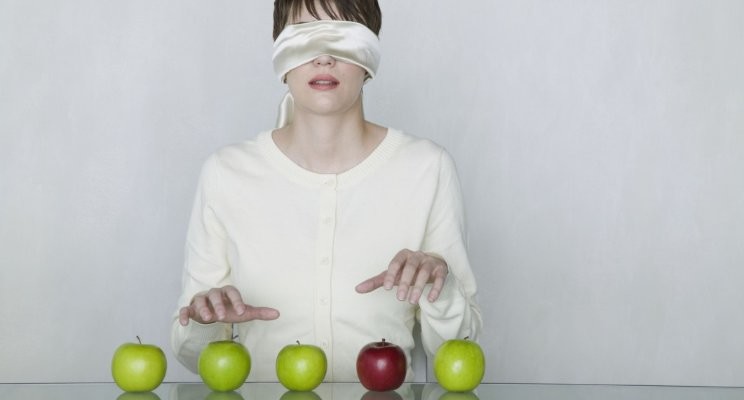
Remember that catchy phrase?
I bet you do.
It was great when we were kids but no so much now as adults. We live in a world where we are pressured to make so many quick decisions. Some unconsciously; while other are direct and in the moment. Others we simply agonize over for an undesirable amount of time. The good news is that it is possible to make better choices. The key lies in understanding what choice is and how it works.
According to the Merriam-Webster dictionary, “choice” is defined as:
- “The opportunity or power to choose between two or more possibilities; the opportunity or power to make a decision”
THE BRAIN BIAS IN OUR DECISIONS:
Everyday we make close to 35,000 conscious decisions. We choose actions and form opinions via mental processes which, are influenced by biases, reason, emotions, and memories. Despite being capable of using our brain to do miraculous things, our emotions often get the better of us. Here is a fantastic article that discusses in more detail the emotional aspect of the brain and the role it plays in choosing. The emotional part of our brain is vulnerable and easily influenced into making errors and cognitive biases.
In psychology, “bias” also refers to behavioral tendencies that affect how we reach conclusions and ultimately make choices. Here are four biases that unconsciously affect how we make decisions.
- Anchoring bias: Basing your decisions around the first piece of information you take in.
- Framing Effect bias: The manner in which choices are presented to us deeply affects how we view them.
- In-group bias: Also known as the bandwagon effect, in-group bias occurs when a person in a group acts in a similar way to other members of that group.
- Loss Aversion bias: Loss aversion causes you to feel more strongly about avoiding a loss than receiving a gain, and explains the endowment effect, our tendency to prefer things we already own over things we don’t.
According to TED Talk expert and professor at Columbia Business School, Sheena Iyengar states the case for our indecision when forced to make choices is due to “choice overload.” Her TED Talk “How To Make Choosing Easier” is amazing and is easy to follow. She lays out a process for making the act of choosing more engaging and easier. Her research is pretty clear:
- The typical American has to make 70 different choices a day and leads to what she called “choice overload.” As a result, we become disengaged in the decision-making process, make poor choices and tend to be dissatisfied with the choices we make.
So there you have it. Probably nothing you didn’t already know. We simply live in a world bombarded with so much stimulation that our brains essential shut down.
WHAT TO DO ABOUT IT:
I honestly got stuck with what I thought would be the best solutions to provide you. In my research, I found many different theories and approaches on how to actually make better choices. Below are 2 different options for you to review and consider trying. The choice is yours to make (pun intended).
OPTION 1: A 7 Step Process and one that I believe makes a lot of sense. The complete steps for each can be found in the original article here.
1. Identify your goal.
2. Eliminate choices by setting standards.
3. Don’t worry about finding the “best.”
4. Be aware of biases.
5. Try not to rush.
6. Don’t sweat the small stuff.
7. Do a postgame analysis.
OPTION 2: For those of you who don’t like “steps”, here are 8 different strategies with various applications that can be used when and how you see fit. They can be found in this article here.
- Learn to settle for good enough. For the ones who love to maximize every situation (ie; High/Over Achievers), when faced with a decision, try not to overthink it. Learn to settle for “good enough,” and be content with the decision you make.
- Practice mindfulness. Mindfulness can have a positive effect on the way decisions are identified, made, implemented and assessed.
- Find an App. Julia Mossbridge, a cognitive neuroscientist developed the app Choice Compass, which allows users to record their heart rhythms as they imagine making each of two contrasting choices. The app tells the user which of the two choices produced heart rhythms most similar to those made when people imagine making positive choices
- Think like a scientist. “Identify a problem or question, gather information, postulate a hypothesis, then basically try to disprove that hypothesis.” When faced with a situation in life where you must make a decision, approach it with this process in mind. “If your hypothesis holds up under scrutiny,” “there is a good chance it is correct.”
- Ask someone. Take advantage of others’ education: Discuss the consequences and options of any decision with an experienced source.
- Skip the meal. Science has shown that those who were hungry made more advantageous choices during uncertain outcomes than those who are sated.
Final thoughts: As with anything that’s important in life, this too will take time but the only way you’re going to get better, is by practicing making decisions every single day. As soon as you start making this part of your daily routine, so will the increase in your confidence, speed and decision making ability.
The floor is yours: What’s your tip for making better choices?
Please leave your comment below as your insights are greatly appreciated and a learning opportunity for everyone reading this article.
With leadership,
Joshua / www.JoshHMiller.com
Please click ‘Follow’ if you would like to hear more from me in the future.
